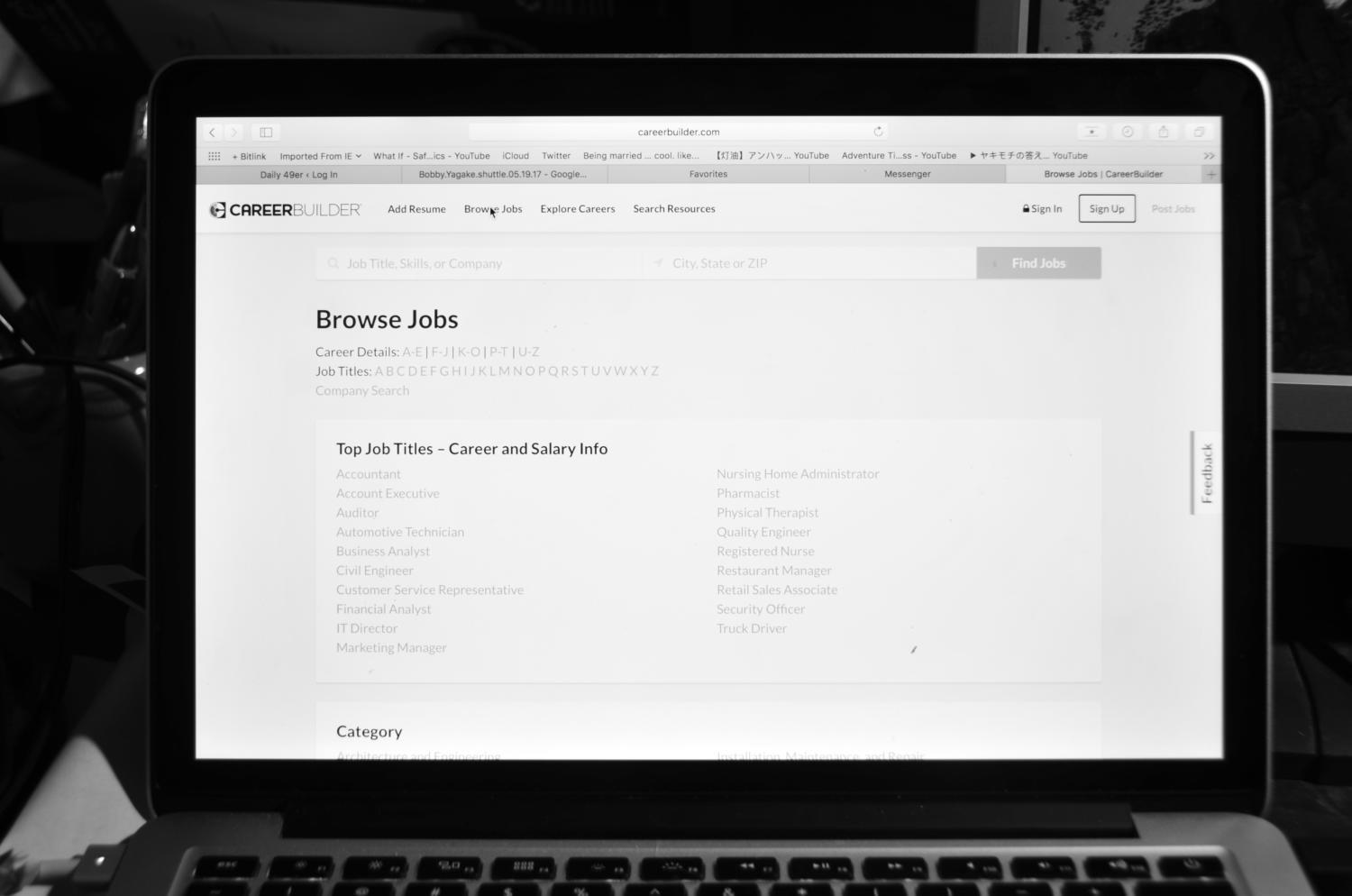Sitting in his cramped rented room on the East side of Long Beach, Paul Durang flips through stacks of hiring flyers and pores over his resume. He glances at his cell phone almost every minute, seeing if there are any calls or emails he may have missed.
“I started looking for a new job last summer,” Durang said. “It’s been a constant cloud hanging over me.”
An accounting major graduating this month, Durang hasn’t had a problem getting offers for business and management positions. However, finding work in accounting has been a different story. And leaving the Los Angeles area may be the most realistic way for him to find it.
“The area is just so competitive,” Durang said. “Everyone starts scrambling for a spot early.”
A new report this year from the Los Angeles County Economic Development Corporation paints a much prettier picture than the reality many in Long Beach are facing. The county of Los Angeles added more than 94,000 jobs this year alone and unemployment has continued to drop, according to the report. As students from Cal State Long Beach begin to enter the workforce, this should be good news. But workers say many of these jobs aren’t high-paying and others are temporary.
Some of that could be due to a lack of qualified workers, said Gary Godshall, co-owner of PrideStaff, an employment agency in Long Beach. With his wife and business partner, Beverly, the two have run PrideStaff, helping anyone from warehouse workers to medical professionals find a job in the area since 2011. But in the last year, the Godshall’s have seen a shift.
“The jobs are out there, but the quality of candidates has dropped,” Godshall said. “Many are coming out of college with little experience … and many more are leaving the area entirely.”
But Peggy Murphy, program coordinator for the Career Development Center, thinks CSULB students are very attractive to potential employers.
“This is a working college,” Murphy said. “Most students will have worked all throughout school, whether part-time or doing internships. Employers love to see that.”
Defined degrees, such as nursing and engineering, don’t tend to have as much trouble according to Murphy. Most of these students know exactly what field they will enter and what they want to do. Liberal arts students and less defined majors such as health sciences, have a harder time finding their fit.
Like Durang, journalism major Justin Covington started looking for work months before graduating last year. But Covington faces a different problem than most recent graduates. Finding work wasn’t his problem at first, it was finding work doing what he wanted. After being offered multiple producing gigs, Covington started to feel like producing might be inevitable. After getting a recommendation from a friend for Circa News, Covington decided to take a chance on a contract job with Circa News to work on multimedia and social media in Washington D.C.
“I reached out to every contact I had made in the past,” Covington said. “I took a risk and it really paid off.”
Covington felt like he had to leave the area to get his foot in the door.
“Someone told me Los Angeles is not a learning market, it’s a good-to-great market,” Covington said. “You aren’t always going to live where you want to be at first.”
The unemployment rate continues to drop, but what’s called “real unemployment” isn’t taken into account. The regular unemployment rates only include people who have actively looked for work in the past four weeks. And those numbers don’t include part-time workers who are looking for full-time work, or “discouraged” workers, those who feel there isn’t a job available for them.
But more alarming, the report leaves out a big group of people on the wrong end of this growth. Unemployment statistics come in the form of U-3, or people without jobs that have actively looked for work within the past four weeks, which some say don’t accurately represent the whole picture.
As of last month, the real unemployment rate is as high as 9.2 percent, significantly higher than the 6.3 percent commonly reported by the Department of Labor. And that 9.2 percent isn’t just including those who have stopped looking for or can’t find work. It includes the underemployed; workers with higher-skilled degrees who have accepted lower-paying positions.
Godshall said employment culture has shifted over time. When he was growing up more companies offered on-the-job training and promoted to higher-paid positions from within. Today, Godshall thinks minimum-wage service industry jobs have become the new entry-level norm. And both recent college graduates, as well as older, displaced workers find themselves competing for them.
“We got into this business to help the community,” Godshall said. “But it’s taking a little more work than I thought it would.”




